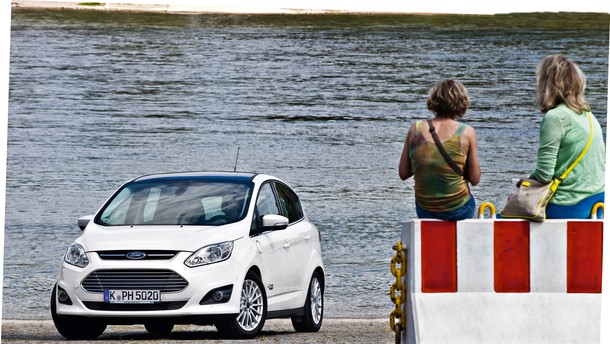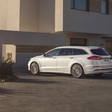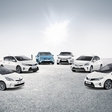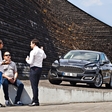
Ford C-Max is a perfect example of this, so it comes as no surprise that European Ford chose this particular model to test its practicality, rather than focusing on its technical specifications. Indeed, the technology of this car is pretty standard for a Ford vehicle. In fact, its powertrain very much resembles the Mondeo Vignale Hybrid, which is also covered in this issue of Plugin Magazine. Though you might think that Ford is a novice when it comes to hybrids (and plug-in hybrids), considering how seldom you run into them in Europe, think again. Ford boasts many hybrid models (and plug-in hybrids), but the truth is they get far more attention across the pond, in the US.
The reason is that, in Europe, the environmental standards (the manufacturers must not exceed specific average annual emissions) are met through advanced diesel technology. Even though this results in low consumption, or rather CO2 emissions (which are particularly important when it comes to restrictions), the Americans still choose to ignore diesel, despite the efforts of many car producers. In America, diesel is used for commercial vehicles, and only an oddball would consider buying a diesel for personal use. This is, of course, the result of the very low price of petrol in the US (though it was once much cheaper than it is these days), and is part of the same set of national peculiarities that includes the somewhat fading obsession with extremely large engines.
And because, in the US, diesel cars merely provide ancillary decoration for showrooms, manufacturers are obliged to improve emissions by other means, the most popular of the moment being hybrids, either classic or plug-in. A handful of Ford hybrid models are available stateside: Fusion Hybrid (called Mondeo in Europe, a classic hybrid) and Fusion Energy (a plug-in hybrid). The same is true for the C-Max, and the electric Focus... Europe lags behind. In fact, there is only one Ford hybrid model there that you can easily get your hands on, the Mondeo Hybrid.

What about the C-Max Energi? It's available in very limited quantities, only 1000 cars per year. Why? Because C-Max Energi is not actually a car that was originally designed to have a plug-in hybrid assembly. The lithium-ion battery, with a 7.6 kilowatt capacity, therefore reduces the trunk space, subsequently adding to the car's mass, which rings in at 1.7 tons. If a glance inside the trunk immediately gives away that this is no regular C-Max, then a look at the outside alone will give no such clues (the Energi logo is small, which is good considering the "interesting" spelling, as is the charging port by the left front door). And fortunately, no rocket science was employed to design the interior of the C-Max Energi, either. Its hybrid nature is revealed through a button for changing operational modes of the hybrid system (EV, automatic, battery preservation and battery charging modes), and some graphics on the LCD screen.

Since the hybrid powertrain is identical to other Ford hybrids, C-Max disguises its mass very well during acceleration. 184 »horses« allow for a perfectly acceptable acceleration but, even in a electric mode, Energi is lively enough to accelerate to 100 kilometers per hour, though it gets a bit sleepy on its way up to its maximum speed under electrical power, 130 kilometers per hour.

As for consumption, it's difficult to say whether our 70 kilometer test drive was representative of everyday use. We took it through the city and outside onto the highway, the same route we took with the similarly capable petrol-powered C-Max, with its 150 horsepower engine and automatic transmission. And fuel consumption? The petrol C-Max used 8.5 liters of fuel, while the Energi averaged 2.2 liters of petrol per 100 kilometers, alongside an average of 4.5 kWh of electricity. Of those 70 kilometers, 50 were driven emission-free. Pretty good for your first try, Ford. We're waiting for the new generation of cars, where specifications like these will be mass-produced.




